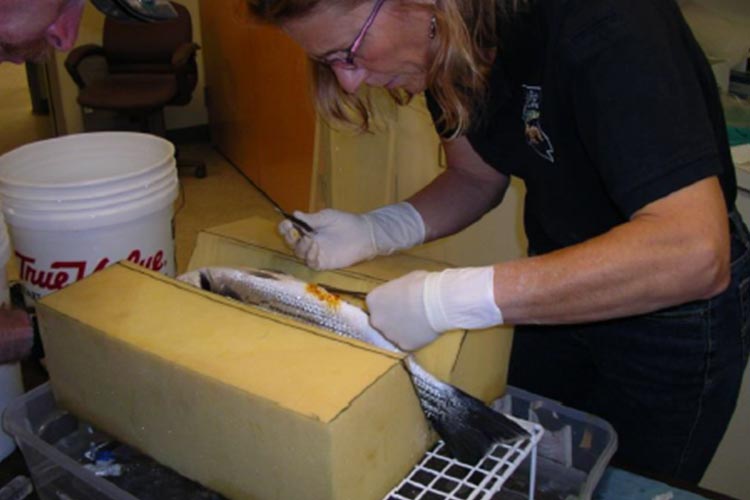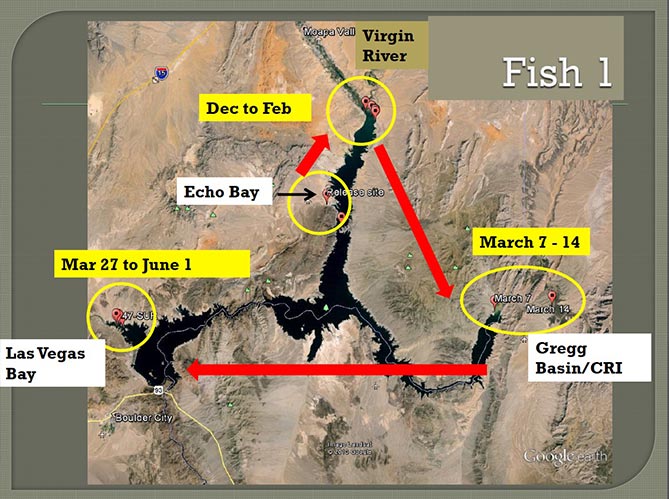
Acoustic tags are placed in the fish surgically by veterinarian Peregrine Wolff. Finding out where fish like striped bass go in a lake as big as Lake Mead can be a tricky business, but it’s an important question. By understanding these animals’ habits - like how far they travel and where they spend most of their time - we can better manage them and keep their populations healthy. Researcher Debora Herndon of the Nevada Department of Wildlife (NDOW) is concerned with striped bass at Lake Mead and how lowering lake levels may affect them. But finding out where they live now and how far they travel was a bit more challenging than anyone thought. To find out more about the striped bass, Herndon came up with a clever plan used previously in other lakes. The idea was to capture fish, then tag them with acoustic tags that emit regular sounds that can be picked up by specialized receivers. This way the fish’s movements could be followed throughout the lake. The initial part of this plan ended up being more difficult than she imagined. “At first I tried capturing fish through netting in both Overton and Boulder Basin without success. I then turned to a professional fishing guide who fishes in Las Vegas Bay” said Herndon. Together they caught over forty fish from which twenty fish were selected for tagging. These fish were taken to the Lake Mead Hatchery where NDOW veterinarian, Peregrine Wolff performed surgery on the fish, implanting acoustic tags into their abdominal cavity. After the surgery, the fish were released back into the lake. “I chose Boulder Basin and Overton Arm as release sites because they are two of the major basins and are both popular striped bass fishing areas. I wanted to see how the striped bass used these two basins.” After the fish were released, Debora and her team had the difficult task of tracking the fish by boat (with a special receiver) and by waiting to see which of the stationary receivers, located throughout the lake, picked up the fish’s acoustic signal. The results were not what were expected – and how far these fish travelled just may come as a surprise. “It turns out the fish used the entire lake, except one fish that remained in Boulder Basin.” In late winter to early spring, these fish travelled from the Overton Arm to where the Colorado River inlets into Lake Mead; by summer, they travelled to Boulder Basin. The fish made a total journey of 120 miles over the course of 6-8 months and sometimes making the trip more than once. “I had no idea the fish were using the entire lake and making these long migrations, and often more than once per year” said Herndon. 
Fish travel from Echo Bay to the Colorado River inlet to the Las Vegas Bay, sometimes multiple times per year. The project ended after three years when the researchers quit receiving signals from the fish but this study taught them just how far a fish will travel. They believe striped bass migration and movement patterns are associated with spawning and food availability. Knowledge gained through this study will help with management decisions and will be important to consider as Lake Mead levels fluctuate over time. |
Last updated: April 4, 2017
